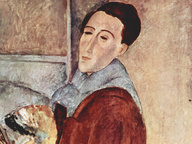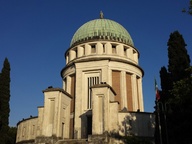Church of San Giovanni Elemosinario
Venezia, Ruga Rialto - San Polo 480
- Location: Venezia, Ruga Rialto - San Polo 480
- Address: Ruga Rialto - San Polo 480
- E-Ticketing WWW: http://www.veneziaunica.it/it/e-commerce/services
- E-Mail: info@chorusvenezia.org
- Phone#: 041 2750462
- Opening: From Monday to Saturday 10am-5pm
(ticket office and bookshop closure and last entrance 4.45pm)
closed on: Sundays, January 1st, easter, august 15th, december 25th - Price: Full rate € 3, discounted € 1,5
chorus Pass: full rate € 12, discounted € 8
For further information on special offers, discounted admission and ticketing please visit the web site or contact the information office. - Transportation: Lines 1, n (stop S. Stae)
Lines 1, n (stop Rialto Mercato)
DESCRIZIONE:
The current church, re-built after a fire between 1514 and 1531, still keeps its original XIV-century bell tower. The ground plan is a Greek cross inscribed in a square, the appearance of the interior is a purely Renaissance Classical style.
The church used to be the seat of different confraternities of merchants and schools of arts and trades: biavaroli (delicatessen shops), couriers, gallineri (hen shops) and painting shops, which vied to see who could make it better looking with works of art. Vasari tells that the Altar Piece of the altar representing Saint John the Almsgiver, the patron saint of the church, was commissioned to Titian, who painted a beautiful work. He then moved to Bologna. In his absence, to challenge him, some Venetian noblemen, commissioned to Pordenone the altar piece for the right apse chapel, representing Saints Catherine, Rocco and Sebastian. Titian, after returning to Venice and finding the altar piece by Pordenone in competition with his own, flew off the handle. The historical truth however allegedly contradicts the argument of Vasari, because the altar piece by Pordenone, dated 1530-1535, is allegedly prior to Titian’s, dated 1545-1550.
In 1591 the School of Merchants commissioned to Antonio Vassilacchi, aka the Aliense, a Foot washing which was located to the left of the high altar to complete the cycle of the Passion of Jesus made by Leonardo Corona which included the Agony in the Garden and the Crucifixion of Christ.
The current church, re-built after a fire between 1514 and 1531, still keeps its original XIV-century bell tower. The ground plan is a Greek cross inscribed in a square, the appearance of the interior is a purely Renaissance Classical style.
The church used to be the seat of different confraternities of merchants and schools of arts and trades: biavaroli (delicatessen shops), couriers, gallineri (hen shops) and painting shops, which vied to see who could make it better looking with works of art. Vasari tells that the Altar Piece of the altar representing Saint John the Almsgiver, the patron saint of the church, was commissioned to Titian, who painted a beautiful work. He then moved to Bologna. In his absence, to challenge him, some Venetian noblemen, commissioned to Pordenone the altar piece for the right apse chapel, representing Saints Catherine, Rocco and Sebastian. Titian, after returning to Venice and finding the altar piece by Pordenone in competition with his own, flew off the handle. The historical truth however allegedly contradicts the argument of Vasari, because the altar piece by Pordenone, dated 1530-1535, is allegedly prior to Titian’s, dated 1545-1550.
In 1591 the School of Merchants commissioned to Antonio Vassilacchi, aka the Aliense, a Foot washing which was located to the left of the high altar to complete the cycle of the Passion of Jesus made by Leonardo Corona which included the Agony in the Garden and the Crucifixion of Christ.
COMMENTI
Map


